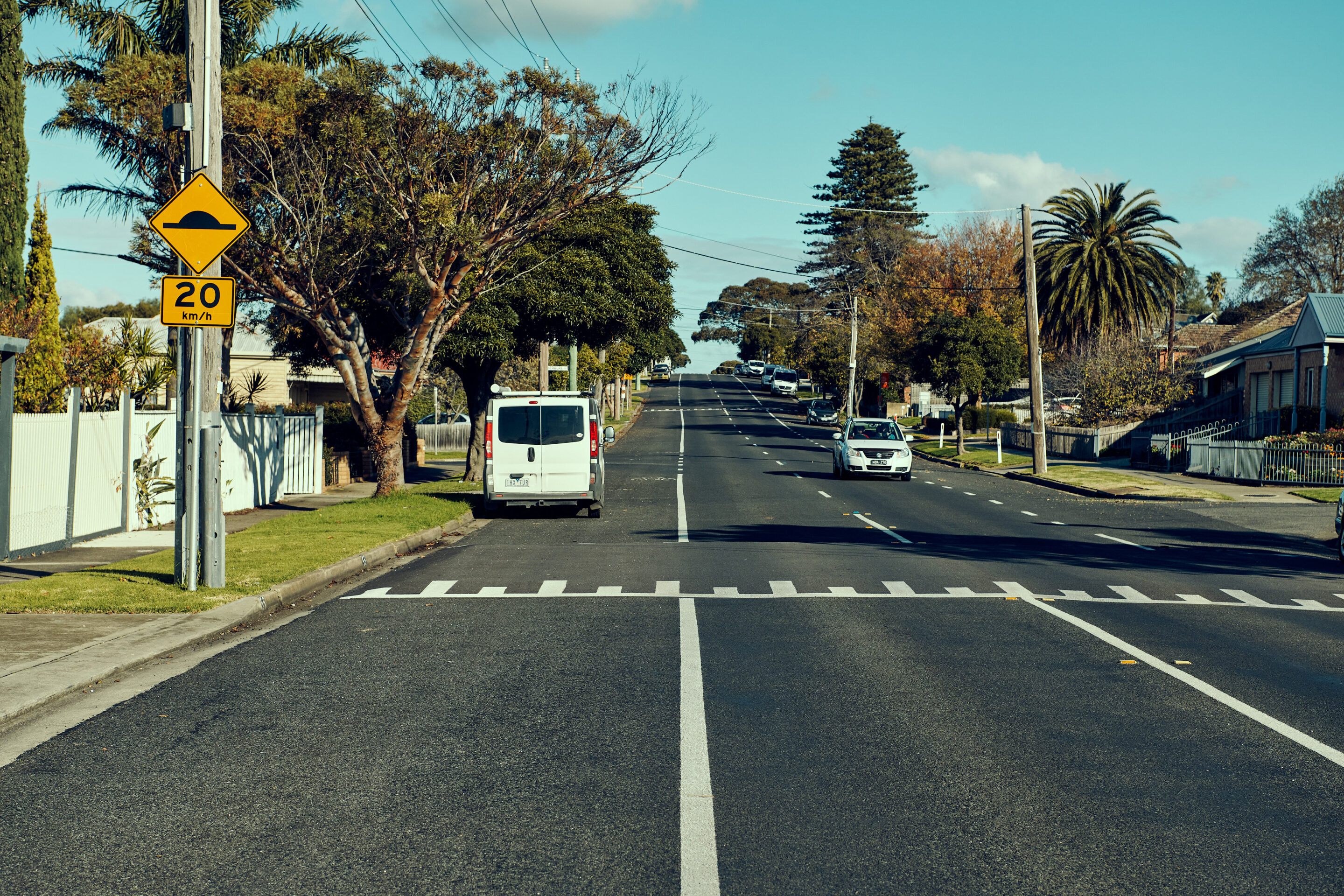
Physical treatments in the road environment are the most effective way to slow vehicles. Road humps are one of the most powerful Local Area Traffic Management (LATM) tools in the toolkit.
To operate efficiently and safely, the following design principles should be considered when implementing road humps:
- The first hump should ideally be within 50 metres of the start of the street/road. If necessary, a treatment such as a Gateway Treatment may be provided to further support the lower speed area.
- Ideally, Sight Distance commensurate with an operating speed of the prevailing speed zone in the street should be available to approaching motorists.
- Humps should be constructed at right angles to the direction of travel.
- Where used in series, hump spacing should ideally be between ~80 and 100 metres with a maximum of ~200m.
- Humps should extend laterally across the full width of the road (except to allow for drainage and cycle by-pass facilities).
- Humps should be clear of driveway entrances to avoid ground clearance problems when vehicles are accessing driveways.
- Piano key markings on humps are to be located on the approach ramp (not on the road surface immediately before the ramp).
- Ramp grades should be designed to achieve the desired vehicle speed reductions while ensuring design vehicle access (ramp grades, lengths, heights)
- The designer should ensure that the road drains efficiently.
We salute the humble road hump – another Safe System solution.
